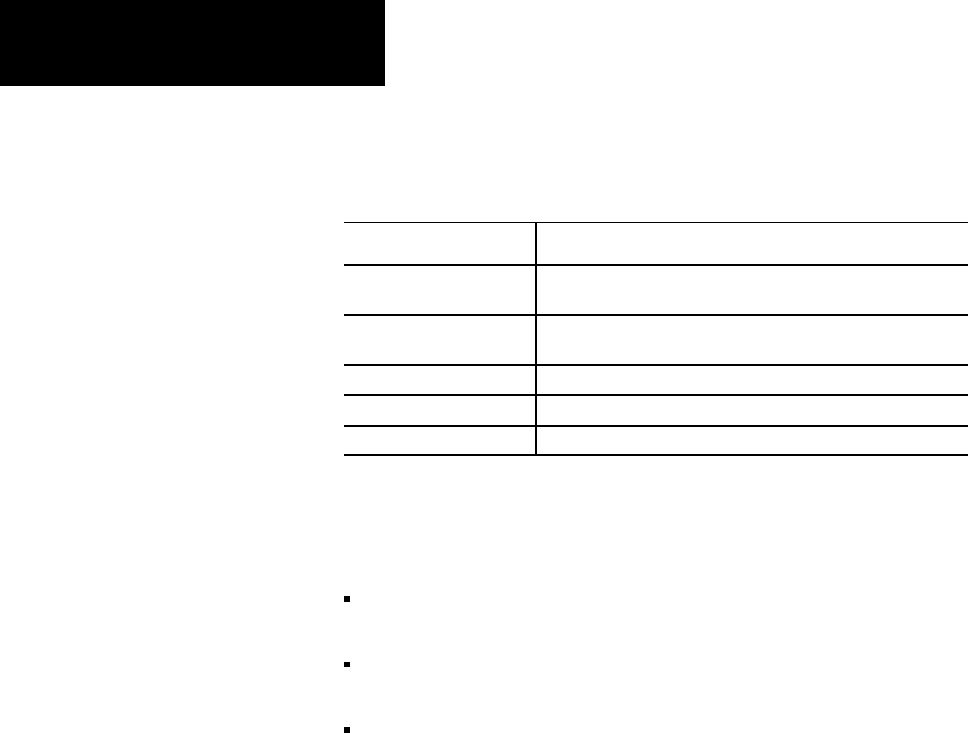User Manual Owner's manual
Table Of Contents
- 1772-6.5.8, Mini-PLC-2/02, -2/16, -2/17 Processor, User Manual
- Important User Information
- Summary of Changes
- Table of Contents
- 1 - Using This Manual
- 2 - Fundamentals of a Programmable Controller
- 3 - Hardware Features
- 4 - Installing Your Programmable Controller
- 5 - Starting Your Processor
- 6 - Maintaining and Troubleshooting Your Processor
- 7 - Memory Organization
- 8 - Scan Theory
- 9 - Relay-Like Instructions
- 10 - Program Control Instructions
- 11 - Timers and Counters
- 12 - Data Manipulation and Compare Instructions
- 13 - Three-Digit Math Instructions
- 14 - EAF Math Instructions
- 15 - EAF Log, Trig, and FIFO Instructions
- 16 - EAF Process Control Instructions
- 17 - Jump Instructions and Subroutines
- 18 - Block Transfer
- 19 - Data Transfer Instructions
- 20 - Bit Shift Registers
- 21 - Sequencers
- 22 - Selectable Timer Interrupts
- 23 - Report Generation
- 24 - Program Editing
- 25 - Programming Techniques
- 26 - Program Troubleshooting
- A - Specifications
- B - Processor Comparison Chart
- C - Number Systems
- D - Glossary
- E - Quick Reference
- Index
- Back Cover

Data Transfer File Instruction
Chapter 19
19-16
Here is an explanation of each value:
This Value: Stores This:
Counter address Address of the instruction's file position in the accumulated
value area of the data table.
Position Current word being operated upon (accumulated value of
the counter).
File Length Number of words in file (preset value of the counter).
File A Starting address of the source file.
Word Address Address of the destination (output) word outside of the file.
Once you establish your file data, you’ll want to edit, load, or monitor your
file data. To perform these functions the processor has a data monitor
mode (Figure 19.3). Use one of these displays:
binary display (Display 0) lets you manipulate one bit at a time by
displaying each word using binary digits.
hexadecimal display (Display 1) lets you manipulate 4 digits which
represents word values.
ASCII display (Display 2) converts your four digits to the ASCII code.
Data Monitor Display










